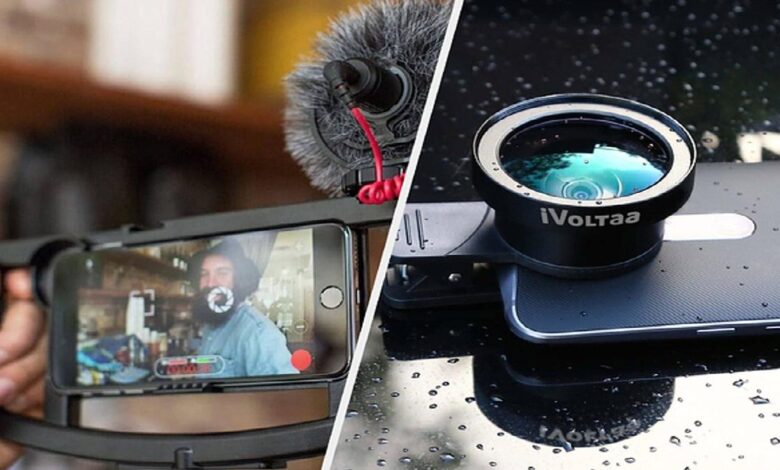9 Best Technologies and Gadgets for Videographers

Any videographer will discover things are a lot easier with a few essential pieces of technology and equipment. The gear you use is critical for capturing what you want on the camera. Whether you want to make feature-length films or are a YouTube vlogger, there are some basic supplies that you will need.
Let’s learn about the types of technology, gadgets, and equipment that every videographer needs:
1. Video Camera
You can’t make the sort of video content you want without the best possible video camera available to you. Although there’s nothing wrong with using a smartphone, you can get an infinitely better and more professional picture from camcorders, DSLR cameras, and compact cameras.
A video camera rental is the recommended option if you cannot afford to buy. By renting a video camera, you tap into wholly necessary technology for video-making without purchasing it outright.
2. Lens Attachments
Lenses will change the way your camera captures video. They allow you to do things like zoom, capture a wide-angle frame, and do advanced camera movements and capture sequences, via lens accessories like tilt-shift lenses and macro lenses.
Although some may not consider lens attachments essential, depending on what you’re doing, they are. There are niche lenses and lenses for your smartphone that can also provide you with some unexpected alternate options on how to film certain images.
3. External Microphones
When a professional video is shot, audio is recorded separately with its own dedicated microphones. It is vital to do this because you want the best audio capture possible, something that’s not always possible depending on where your camera is positioned.
External mics can capture all sorts of sounds, perfect for various film shoots and styles of filming. There are lots of relatively affordable microphones out there that can help you get the high-quality audio you desire to pair with your video image.
4. Headphones
There are all sorts of microphones you can buy and ways to capture sound. Don’t forget the headphones, either. When you’re recording video, you can see it on your camera and see it’s recording. You can’t see audio though. With headphones, you can hear if there’s an audio problem, if the audio is not being recorded, or if there’s a technical glitch.
You don’t want to arrive home thinking everything’s completed only to find out that there’s a major, major audio issue rendering that day’s work almost useless. Be sure to have a way to test your audio in real-time, verifying it’s doing what you think it should be doing.
5. Dedicated Computer
Have a computer dedicated to video editing and assembly. Video software uses a lot of computing power, especially when it comes to rendering, which can take hours when you are working with a lesser-quality machine.
You will also need to find a decent video editing software program so that you can edit your video the way you want, add title pages, edit audio, add effects, redo colors, and more. You can certainly get away with doing this on a cheap laptop. However, you may run into certain limitations as it relates to time to complete certain tasks.
6. Memory and Hard Drives
When you are on the job, you don’t have a computer for offloading data. You’re relying on memory cards and portable hard drives to retain what it is you will be shooting. Portable camera batteries and charging cables might be included here as well.
The last thing any filmmaker or video-maker wants is to run out of power or space on the job while they’re capturing action. If you don’t set yourself up to compensate for the moments when this happens, you will have to stop shooting and wrap up. That’s why these gadgets are essential.
7. Different Lighting Rigs
Lighting is everything in making video. A simple LED light is a great starting point for vloggers. A 3-point lighting kit – i.e. a key light, fill light, and backlight – is a definite recommendation for anyone doing proper filmmaking. It’s the single thing that differentiates an amateur from a professional.
Within the scope of lighting, you also have several accessories to toss on, i.e. different light bulb styles, tripods, light stands, softboxes, reflectors, and more. Depending on your budget and the type of video you are shooting, you may want to consider what you need for your shoot in the scope of lighting accessories.
8. Tripod
Tripods are absolutely essential. They are what steadies the camera. Tripods make it possible to angle cameras and film from different vantage points. The result is footage that’s always smooth and stable. You won’t have to hold the camera in your hands any longer and struggle to keep it steady.
There are all sorts of tripods and different ways to position it, allowing you to make all different types of videos without restriction. Whether you’re doing a one-on-one blog or a professional-grade film, a tripod is another must-have.
9. Carrying Bags
This is less of an equipment recommendation and more about how you intend to transport videography equipment. Decent-quality carrying bags are a must. You have to protect everything in transport.
Videography equipment is insanely expensive. A broken camera, lens, or microphone will interrupt the process of completing your video. When this happens, it increases your costs. If you’re already close to the extremes of your budget, it may result in your project not being finished.